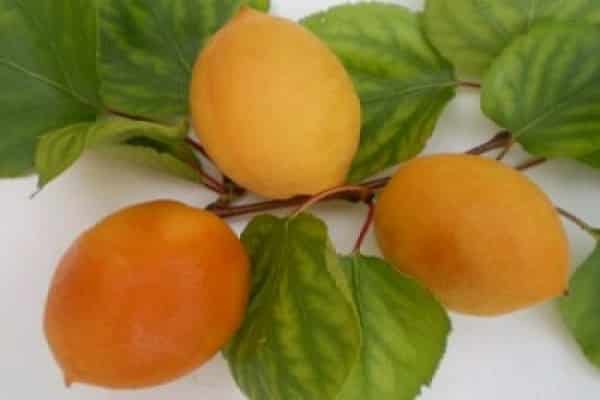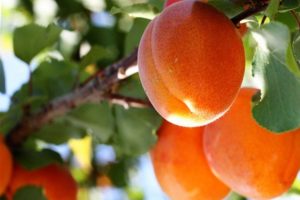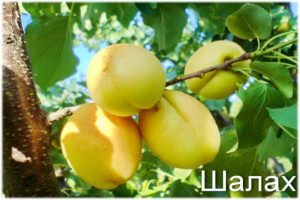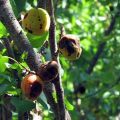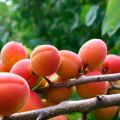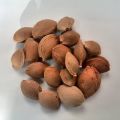Description of the apricot variety Olympus, yield characteristics and cultivation
Where did they first become plant apricots, it is not known exactly. The fruit tree grew in the Caucasus and Asia for several millennia BC. The fruits of stone fruit came to Greece together with the soldiers of Alexander the Great and began to be grown in gardens. During this period, many varieties of apricots were created by crossing, Olympus, which is one of them, pleases with a stable yield. Orange and yellow fruits are rich in vitamins and various microelements. When they are used, the immune system is strengthened, the thyroid gland begins to work better.
History of origin
The selection of the Olympus apricot was carried out by specialists of the Nikitsky Botanical Garden, located near Yalta. When 2 varieties of the plant were crossed in the fifties of the last century, a vigorous tree was created, which inherited its power from apricot. Hardy, drought resistance and sweet taste of the fruit received from Yerevan. The variety is cultivated on the Crimean Peninsula. During transportation, fruits do not deteriorate, do not lose their presentation, are stored for a long time, are grown by gardeners and summer residents.
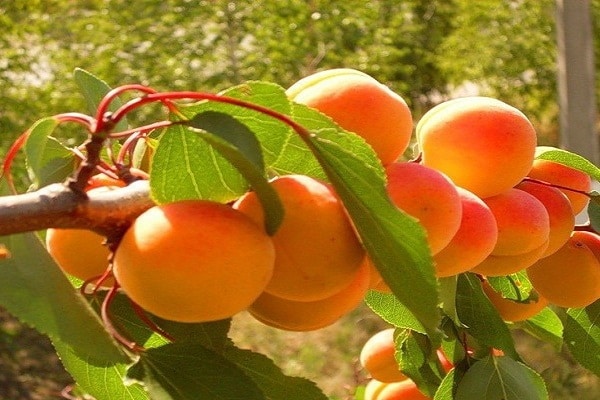
Description of the variety
The tall apricot tree Olympus forms a spreading, rounded crown. The breeders who were engaged in the creation of this stone fruit culture tried to adapt the variety to unfavorable climate conditions - to Siberian frosts, to the absence of rain, sharp temperature jumps, to pest infestations.
Olympus is not afraid of drought, tolerates slight frosts, is resistant to some pathogens of fungal diseases, but pollinators need to be planted next to the tree, which have the same growing season.
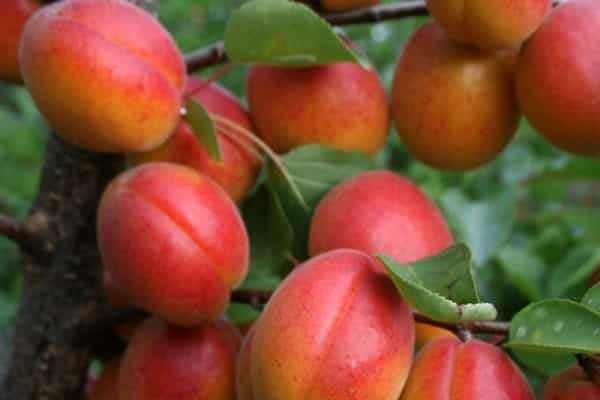
Fruit color
The first fruits usually appear on the tree at 3 years old, although the plant blooms earlier. Ripe fruits are different:
- large size;
- beautiful golden skin;
- gentle blush;
- shape in the form of an oval.
The firm flesh has a rich orange color. A small bone can be easily separated from it.
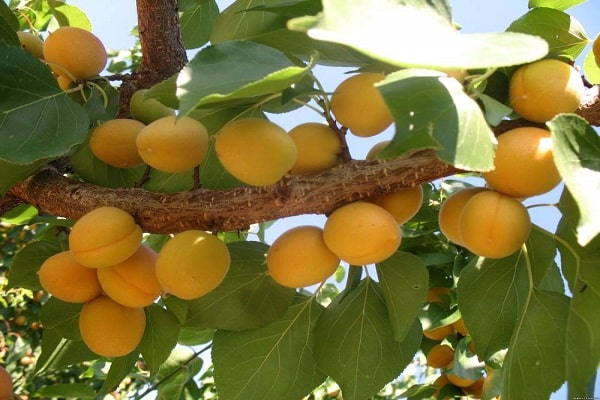
Fruit taste
The ovary is formed on last year's growths and spurs. One apricot weighs about 70 g. Fruits are rich:
- organic acids;
- vitamin C and pectin;
- sugars and carotene.
Apricots make excellent compotes, jams, and both adults and children love to feast on them fresh. The pulp of the fruit has a pleasant sweet-sour taste, garden aroma.
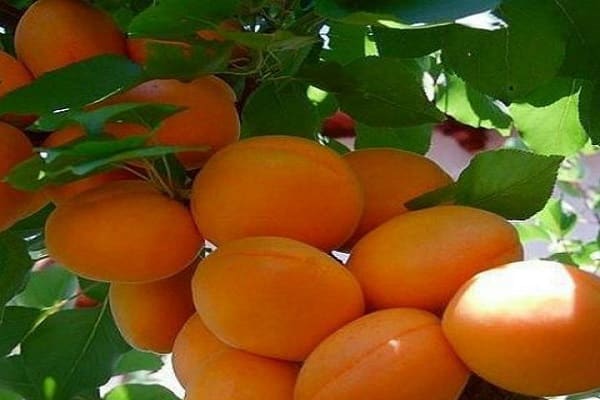
Ripening terms
Fruits of the Olympus variety in Crimea, in the steppe part of Ukraine are poured with juice and ripen in July, there are years that they are harvested at the beginning of the month, but more often after the 15th.The tree gives a stable harvest, but if you carefully read the description of the variety, it becomes clear that you need to prune it every year, otherwise the fruits become smaller.
Olympus is planted not only by summer residents, but also by farmers, for whom it is important that apricots tolerate transportation well, do not rot for a long time.
Growing features
A tall tree takes root normally, pleases with fruits for more than a dozen years, if you create favorable conditions for it. Apricots adore the sun and warmth, light fertile soil, respond positively to feeding.
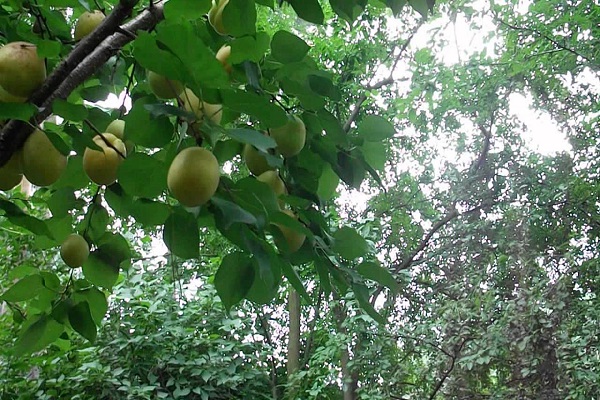
Choosing a landing site
Olympus, like other varieties and hybrids, will not grow in the lowlands, where melt and rainwater collects, cold air lasts for a long time. You need to grow an apricot on a small hill or at the base of a slope. The sun's rays must hit the tree all day, and it must also be protected from the north wind.
You can not place a seedling in a place where nightshade and stone fruit crops were cultivated. The tree does not take root on acidic and clayey soils. In the first version, the site is limed, in the other case, the soil is diluted with humus, peat, sand.
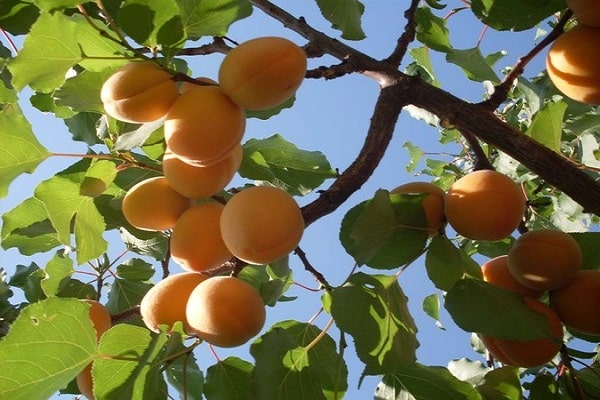
Landing
It is possible to grow Olympus from a bone only in the Crimea and in Ukraine, since it was bred for this area. Summer residents and gardeners cultivating this kind of apricot cut the cuttings from the strongest shoots and put them in water in which a growth stimulator is diluted.
When buying ready-made seedlings, you need to check if they have double buds, the wilds are covered with thorns. Having dug a hole to a depth of 60 cm, which is done in advance:
- Small pebbles or expanded clay are placed on the bottom.
- The groove is covered with peat and soil, leaving a small mound on top.
- A tree is planted no earlier than 10 days, when the earth subsides a little. The neck of the root is left above the soil surface.
- A young apricot is tied to a support.
Having compacted the soil in the near-trunk circle, buckets of 3 water are poured. Organic matter and mineral fertilizers are applied when preparing the pit.
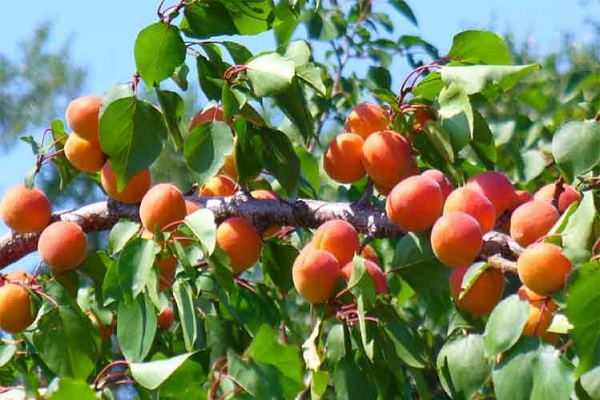
Care
After 3-4 years, the tree will delight you with the first fruits, if you constantly take care of it. It is necessary not to be lazy to prune branches, form a crown, moisten and loosen the ground under an apricot, feed the plant with nutrients.
Watering
Although Olympus tolerates prolonged droughts, juicy and large fruits ripen only when the tree has enough moisture. In the early years, the seedling is watered with warm water, making shallow grooves.
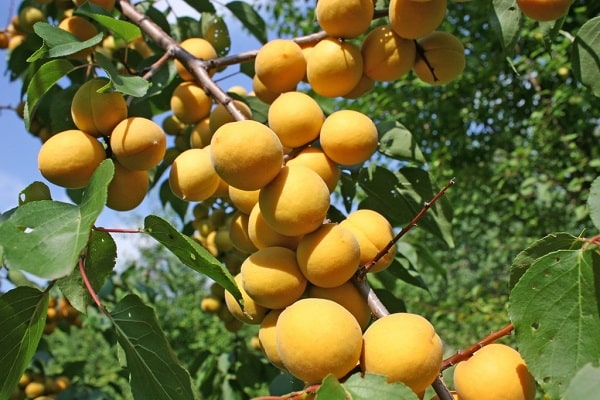
Preparing for winter
Before the onset of cold weather, the trunk of a young tree is wrapped with needles or strong material so that hares, mice and other rodents do not damage it. Fallen leaves and blackened fruits are raked up and burned.
Apricots can be dug in with earth for the winter, sprinkled with peat, straw or sawdust, but this is not done in the southern regions, since there are no severe frosts there.
Advantages and disadvantages of the variety
Olympus is valued for its high yield, excellent taste of fruits that can be transported over long distances without worrying that they will lose their presentation. The variety is suitable for large-scale cultivation and for summer cottages. Apricot is not afraid of drought, it is rarely affected by fungi and viruses.
The disadvantages of Olympus include the need for annual pruning, without performing this procedure, small fruits ripen.
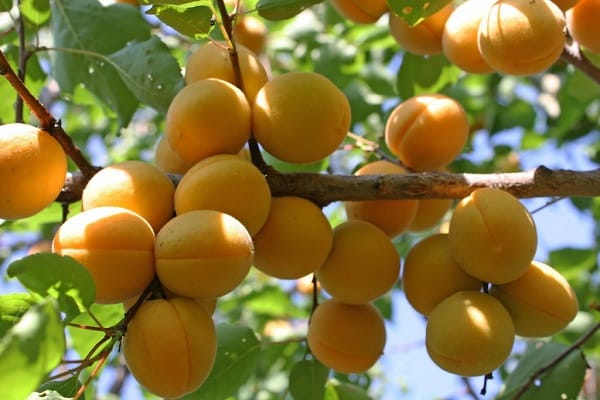
Diseases and prevention
Damp and cold weather promotes the activation of fungi, which, multiplying rapidly, harm not only one tree, but can also destroy an entire garden. Although Olympus is resistant to a number of diseases, the plant cannot cope on its own:
- with gray rot;
- cytosporosis;
- vertical wilting.
To prevent the multiplication of pathogens, leaves and mummified fruits are raked, removed from the site and burned.In early spring and September, to prevent fungal diseases, trees are sprayed with copper sulfate or Bordeaux liquid.
